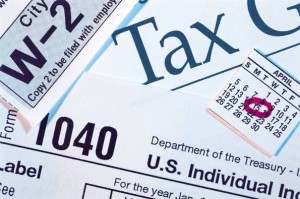When I think of taxes and the IRS, I get a bit nervous. I get a knot in my stomach every year before clicking that submit button when electronic filing our tax returns. So, when we received an IRS notice in March of 2012 indicating a $1500 error, I immediately felt sick.
Thoughts that went through my mind were how could I have missed such a huge amount, payment would need to come from our emergency fund, and why did it take over a year to notice the error.
In retrospect, I should have just relaxed and gone to my documentation. Please learn from my experience by accepting the notice and dealing with it in an organized manner.
The evening I received the notice, I waited until the kids were in bed to concentrate on understanding and working through the information. Dealing with the issue quickly helped put my mind at ease and clear the air well before the deadline. I share how to dispute an IRS notice to calm you should you also receive a notice.
Part 1: Preparing your Case
These are tips that I found helped me – as dealing with the IRS is one of the top items on my I’D RATHER BE DOING ANYTHING OTHER THAN THIS list. 🙂
1. Gather your Tax Documents
Keeping our tax returns in our important documents file, I went to the 11th file opening and retrieved our 2010 federal tax return.
2. Choose a Quiet, Non-interrupted Space
Waiting until my children went to bed gave me a chunk of time at my desk without interruption in which to work.
3. Take a Deep Breath
Giving myself a moment to collect myself, clear my head, and focus on the task at hand, I took a series of deep breaths before looking at the notice.
4. Read the Notice in Full
Our notice was 12 pages in length. Of course, some of it was in legal terms, but I worked my way through the information.
5. Identify the Line Item Issue
For us, the notice issue was when we converted our Traditional IRA to a Roth IRA. We took advantage of the tax code loop hole and chose to defer paying taxes on the total amount until 2011 and 2012. Since Paul and I both converted, the IRS was asking for the total tax from both our accounts in 2010.
6. Prove your Choice
I went back to our tax return to find our nondeductible IRA forms and confirmed that these were filed electronically with our tax return.
7. Organize your Proof
With the documentation collected and realizing that we had filed correctly, I put all the paperwork in the order I needed to contact the IRS.
As I prepared my case, I became more confident realizing that the IRS made a mistake. I relaxed knowing that our family would not need to pay the $1500 amount indicated as half of the tax was claimed on our previously filed 2011 tax return and the other half would be claimed on our 2012 return.
Dealing with the IRS is not a walk in the park but by keeping our documents and confirmations of actions taken, I had proof to prepare my case. The second part of this short series will share how I addressed the notice with the IRS.
If you receive a notice from the IRS, then gather your tax documents, choose a quiet, non-interrupted space, take a deep breath, read the notice in full, identify the line item issue, prove your case, and organize your proof. With your case prepared, you will have a better understanding of your situation when dealing with the IRS. Happy preparing!
Question: Have you ever received an IRS notice?



